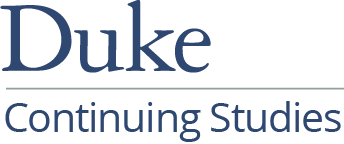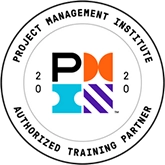BABOK® Guide 2.0 – What’s in it for You?
A survey of the changes between Version 2.0 and previous versions of the Guide to the Business Analysis Body of Knowledge®
The Guide to the Business Analysis Body of Knowledge® (BABOK® Guide) Version 2.0 is a must-have tool for individual business analysts, and for organizations that employ or engage business analysts. The BABOK® Guide 2.0 is a process- and methodology-independent reference defining the business analysis tasks that must be done to effectively deliver solutions that add value to an enterprise. The BABOK® Guide describes techniques for eliciting, analyzing and managing requirements that are in widespread use around the world, and provides a comprehensive description of the key competencies that business analysts should have. The new version of the BABOK® Guide is both comprehensive and authoritative, having been developed with the help of input from thousands of practitioners, surveys and extensive review and feedback from industry experts.
The BABOK® Guide Version 2.0 addresses a broader range of business analysis initiatives than earlier versions, with less of a focus on software development, and more emphasis on selecting the right combination of solution components, such as changes to organizational structure, policies and processes. Software systems, whether custom developed in-house, outsourced or purchased as a package, are likely to be only a part of a business solution.
While the BABOK® Guide definition of a requirement is essentially unchanged, the types of requirements have changed: Business requirements, Stakeholder requirements, Solution requirements (Functional and Non-Functional) and Transition requirements. The interpretation of “requirement” is also much broader, including past, present and future conditions and capabilities, implied requirements, descriptions of organizational structures, roles, policies and so on.
The organization and structure of the new BABOK® Guide has been improved: techniques are described separately from the tasks within the knowledge areas. This makes each knowledge area simpler and easier to understand, and to apply useful techniques consistently across the knowledge areas.
Although we will probably never completely eliminate the role confusion between project managers and business analysts, the
BABOK® Guide Version 2.0 clarifies the more contentious areas like stakeholder analysis and scope control; and, within almost every
task within every knowledge area, the interaction between the business analyst and the project manager, along with other key
stakeholders, is explicitly described.
The knowledge areas within the BABOK® Guide 2.0 are:
- Business Analysis Planning and Monitoring
- Elicitation
- Requirements Analysis
- Requirements Management and Communication
- Enterprise Analysis
- Solution Assessment and Validation
- Underlying Competencies
Business Analysis Planning and Monitoring describes the planning of business analysis initiatives very well, and limits the discussion to business analysis activities, so it’s much more relevant for business analysts. Stakeholder analysis is limited to stakeholder participation in business analysis activities. Defining the requirements risk approach, and defining the business analysis work division strategy have been removed from the BABOK® Guide Version 2.0, although risk analysis is mentioned now as a technique. Both topics are described very well in the Guide to the Project Management Body of Knowledge® (PMBOK® Guide).
In shifting the focus away from IT initiatives, the discussions about “waterfall”, “iterative” and “agile” development lifecycles has been replaced with “plan-driven” and “change-driven” project lifecycles. New in Version 2.0 is the task to monitor and measure business analysis performance.
The Elicitation Knowledge Area hasn’t changed much, with essentially the same techniques as Version 1.6; however, reverse engineering has been removed as an elicitation technique. That doesn’t mean that it’s not a viable approach to uncovering requirements; it's just that it’s apparently not in widespread use among business analysts.
The Requirements Analysis Knowledge Area is where many people familiar with the BABOK® Guide Version 1.6 will notice a substantial difference. There is much less of a focus on documenting requirements for IT systems, which really falls more within the realm of system analysis rather than business analysis anyway.
The Enterprise Analysis Knowledge Area was one that many business analysts felt a little uncomfortable with. It’s simpler and likely more relevant to most of us, now, with a focus on feasibility studies, defining the scope of a solution, and developing a business case. The discussion about Enterprise Architecture has been removed (but it may come back in a later version). Selecting and prioritizing new projects has been removed, as has launching new projects. Yes, some math is still involved in the business case.
The Requirements Management and Communication Knowledge Area combines most of what was in the Version 1.6 Requirements Communication knowledge area with the topics of change control and requirements traceability. Of particular interest is a new task: Maintain Requirements for Reuse, which addresses the concept of defining and managing requirements in such a way that they may be used in subsequent business analysis initiatives, or just to keep them under control for the purposes of maintenance and making enhancements to existing solutions.
The Solution Assessment and Validation Knowledge Area has been substantially “beefed up”. The intention is to ensure that the emerging solution truly addresses the business objectives, even if the business objectives have changed since the start of the initiative. How often have you been involved in the development of a solution, only to discover that, even though it was what the client asked for, when you go to put it in production, it doesn't fit with the business? The tasks within this knowledge area are intended to help a business analyst avoid that situation.
The Underlying Competencies are described as a seventh knowledge area within the new BABOK®Guide, and this is a valuable improvement over previous versions. Underlying competencies are the “softer skills” related to conducting business analysis activities, such as communication skills, interacting with others, business knowledge of the organization, of the industry and of related solutions, behavioral characteristics such as ethics and trustworthiness, analytical thinking and problem solving, and knowledge of software applications like modeling tools.
Finally, a glossary of 226 terms is provided.
Don't throw away your earlier version of the BABOK® Guide; some of the great features of Version 1.6 are not part of the latest version. Enterprise Architecture is out, for now, because Version 2.0 focuses on individual initiatives rather than strategic business analysis. That wonderful list of requirements quality attributes from page 209 of Version 1.6 is gone as well as the description of the different types of “quality of service requirements” is gone. These changes may have been necessary to make the current contents more reflective of the concept of “generally accepted practices in widespread use”, but they are still worthwhile concepts.
Summary
The Guide to the Business Analysis Body of Knowledge® (BABOK® Guide) Version 2.0 has reached a level of maturity that is likely to see widespread adoption in all industries, and will likely be the definitive reference about business analysis for the next couple of years.
Version 2.0 focuses more on getting the right solution that adds business value, rather than on getting a software solution right. As such, it truly concentrates on business analysis rather than system analysis or project management.
If you are a business analyst, you could use the BABOK® Guide as a reference for planning and conducting business analysis initiatives, and as a roadmap to help you with your own professional development.
If your organization employs or engages business analysts, Version 2.0 of the BABOK® Guide could serve as the basis for a competency model that defines the skills and abilities that your business analysts should have.
For more information on The Guide to the Business Analysis Body of Knowledge® (BABOK® Guide) Version 2.0, please contact a training consultant at +1.978.649.8200.
About the Author:
Phil Vincent, CBAP®, PMP®, is a senior consultant with the Corporate Education Group.
IIBA®, BABOK® and Business Analysis Body of Knowledge® are registered trademarks owned by International Institute of Business Analysis.
PMI®, Guide to the Project Management Body of Knowledge® and PMBOK® are registered trademarks owned by the Project Management Institute.
For more information on this topic, as well as how Corporate Education Group can help power your organization’s performance, contact us via email or call 1.800.288.7246 (US only) or +1.978.649.8200. You can also use our Information Request Form!










